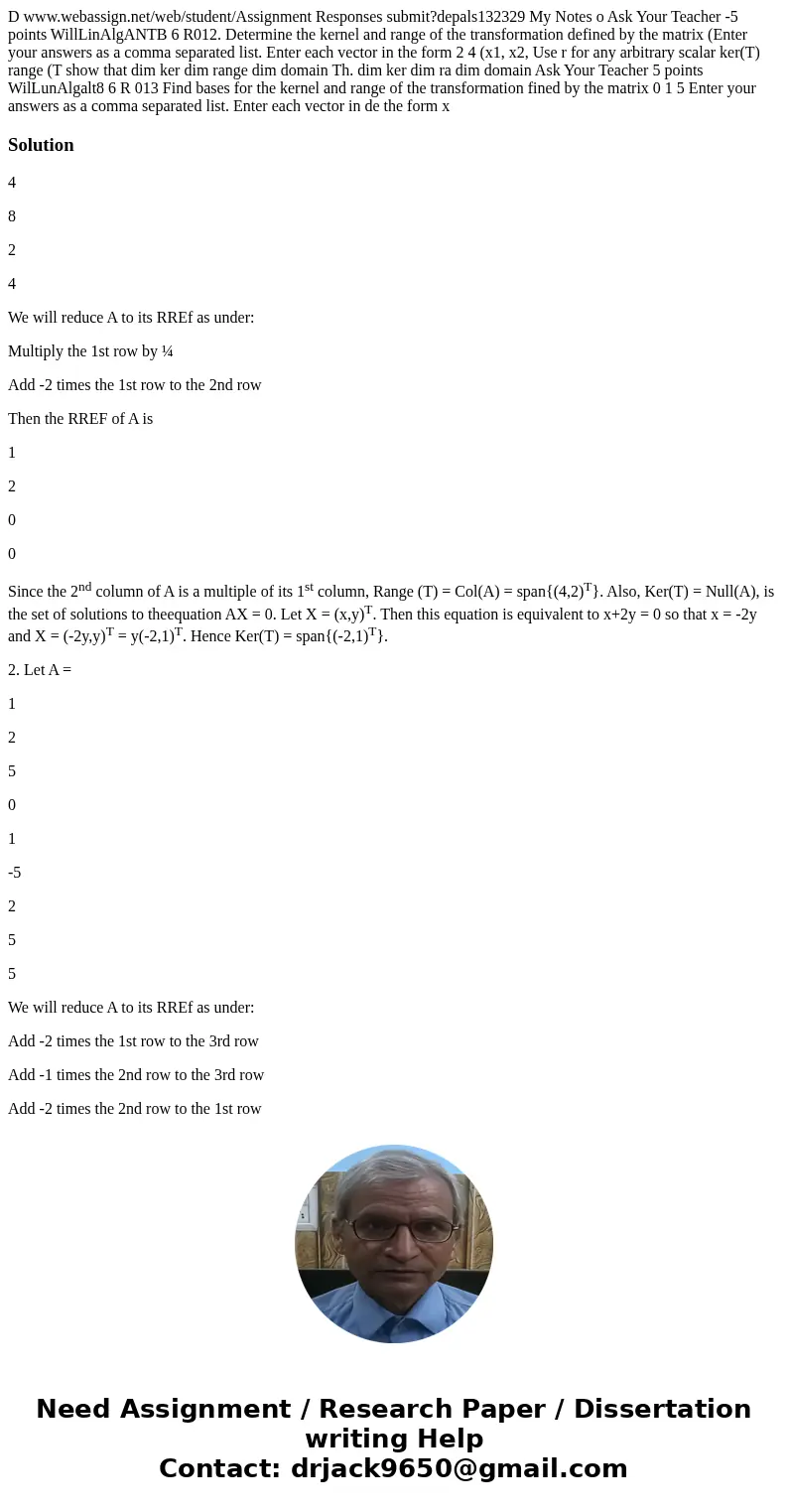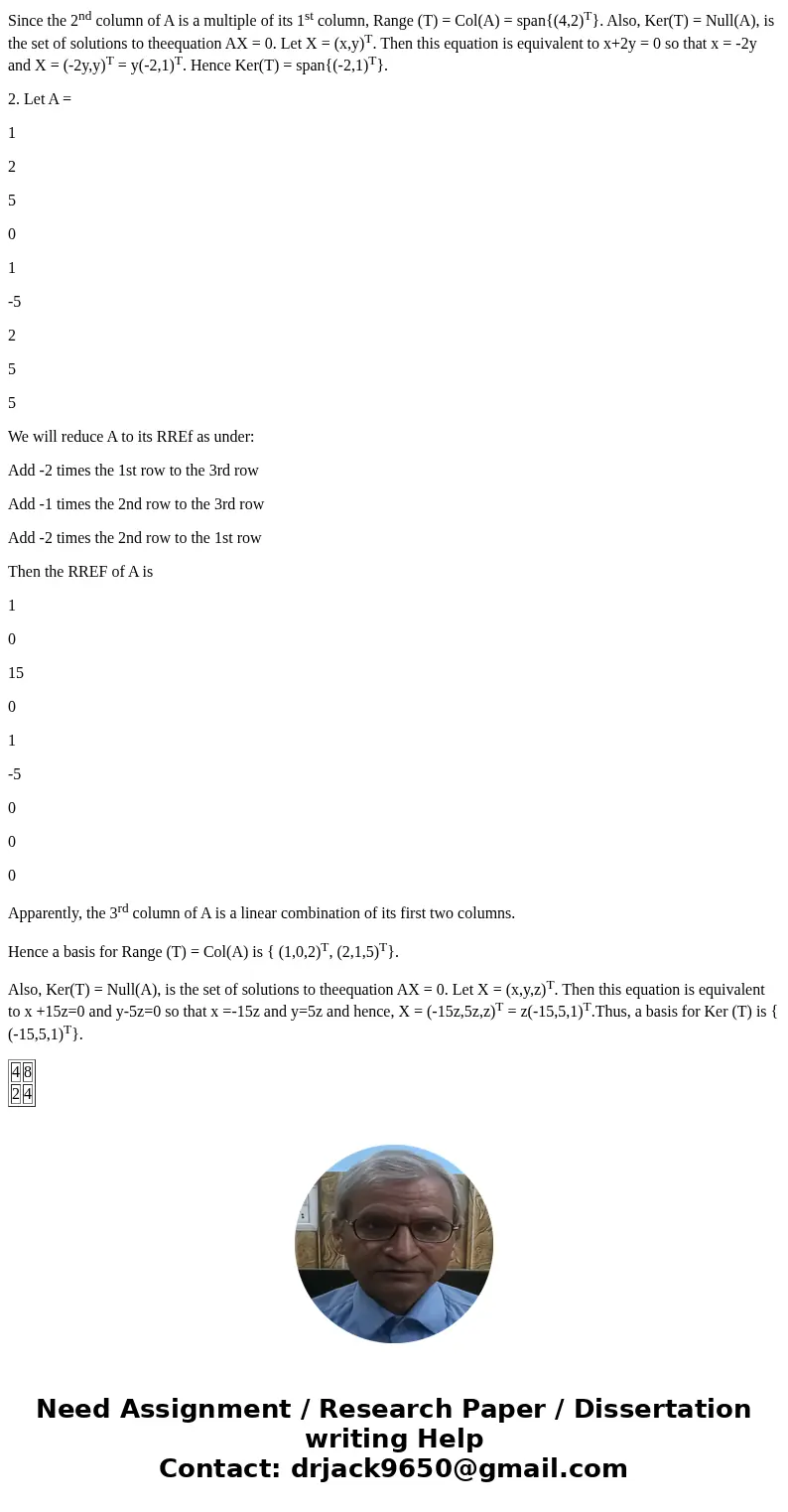D wwwwebassignnetwebstudentAssignment Responses submitdepals
Solution
4
8
2
4
We will reduce A to its RREf as under:
Multiply the 1st row by ¼
Add -2 times the 1st row to the 2nd row
Then the RREF of A is
1
2
0
0
Since the 2nd column of A is a multiple of its 1st column, Range (T) = Col(A) = span{(4,2)T}. Also, Ker(T) = Null(A), is the set of solutions to theequation AX = 0. Let X = (x,y)T. Then this equation is equivalent to x+2y = 0 so that x = -2y and X = (-2y,y)T = y(-2,1)T. Hence Ker(T) = span{(-2,1)T}.
2. Let A =
1
2
5
0
1
-5
2
5
5
We will reduce A to its RREf as under:
Add -2 times the 1st row to the 3rd row
Add -1 times the 2nd row to the 3rd row
Add -2 times the 2nd row to the 1st row
Then the RREF of A is
1
0
15
0
1
-5
0
0
0
Apparently, the 3rd column of A is a linear combination of its first two columns.
Hence a basis for Range (T) = Col(A) is { (1,0,2)T, (2,1,5)T}.
Also, Ker(T) = Null(A), is the set of solutions to theequation AX = 0. Let X = (x,y,z)T. Then this equation is equivalent to x +15z=0 and y-5z=0 so that x =-15z and y=5z and hence, X = (-15z,5z,z)T = z(-15,5,1)T.Thus, a basis for Ker (T) is { (-15,5,1)T}.
| 4 | 8 |
| 2 | 4 |


 Homework Sourse
Homework Sourse